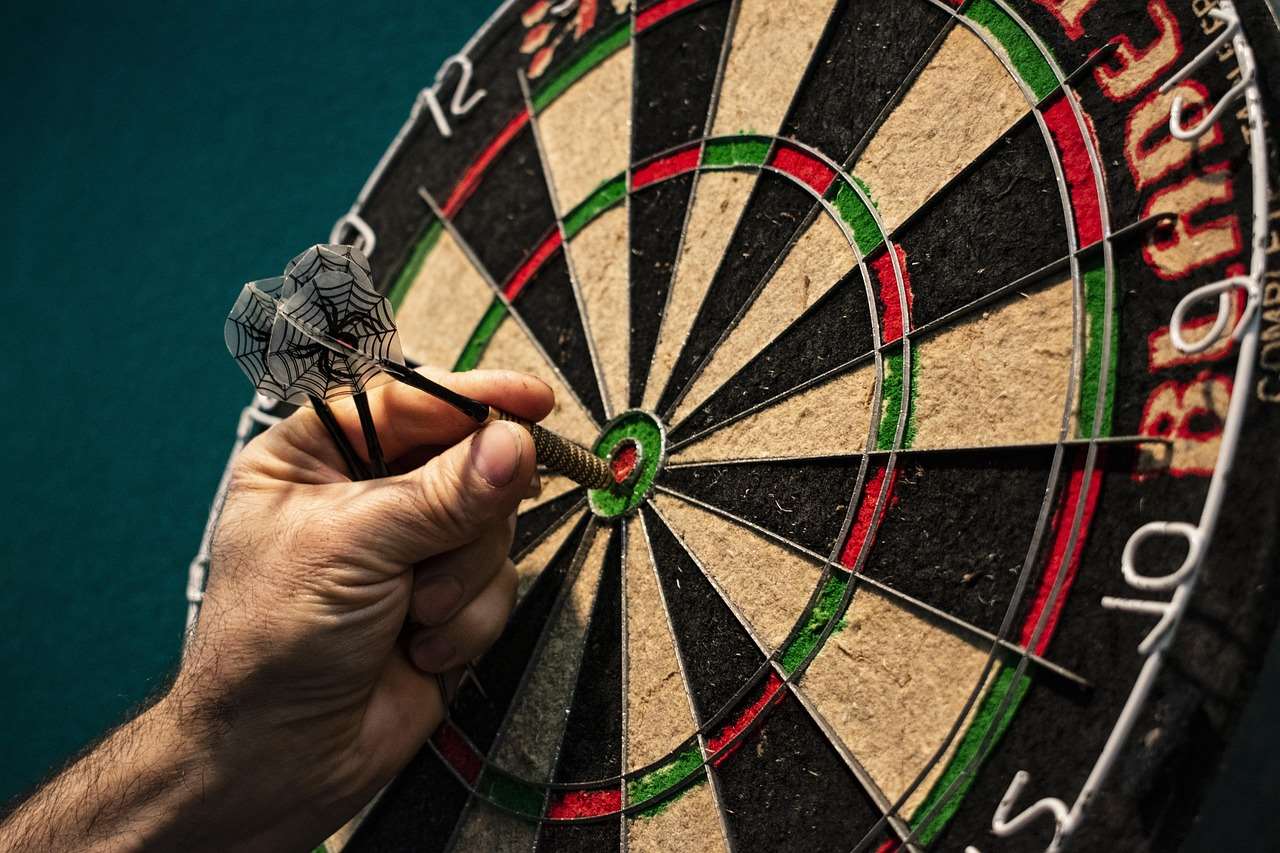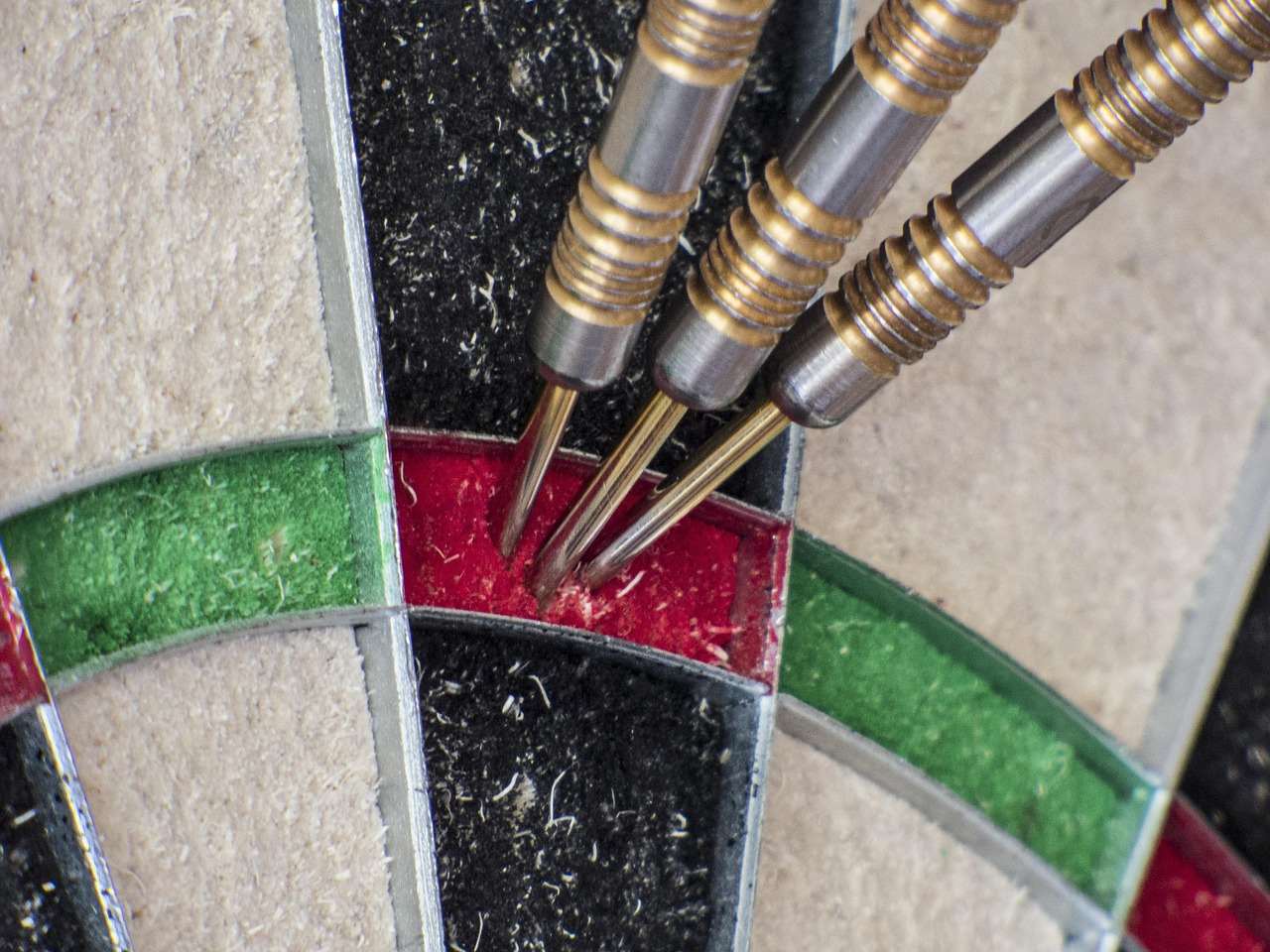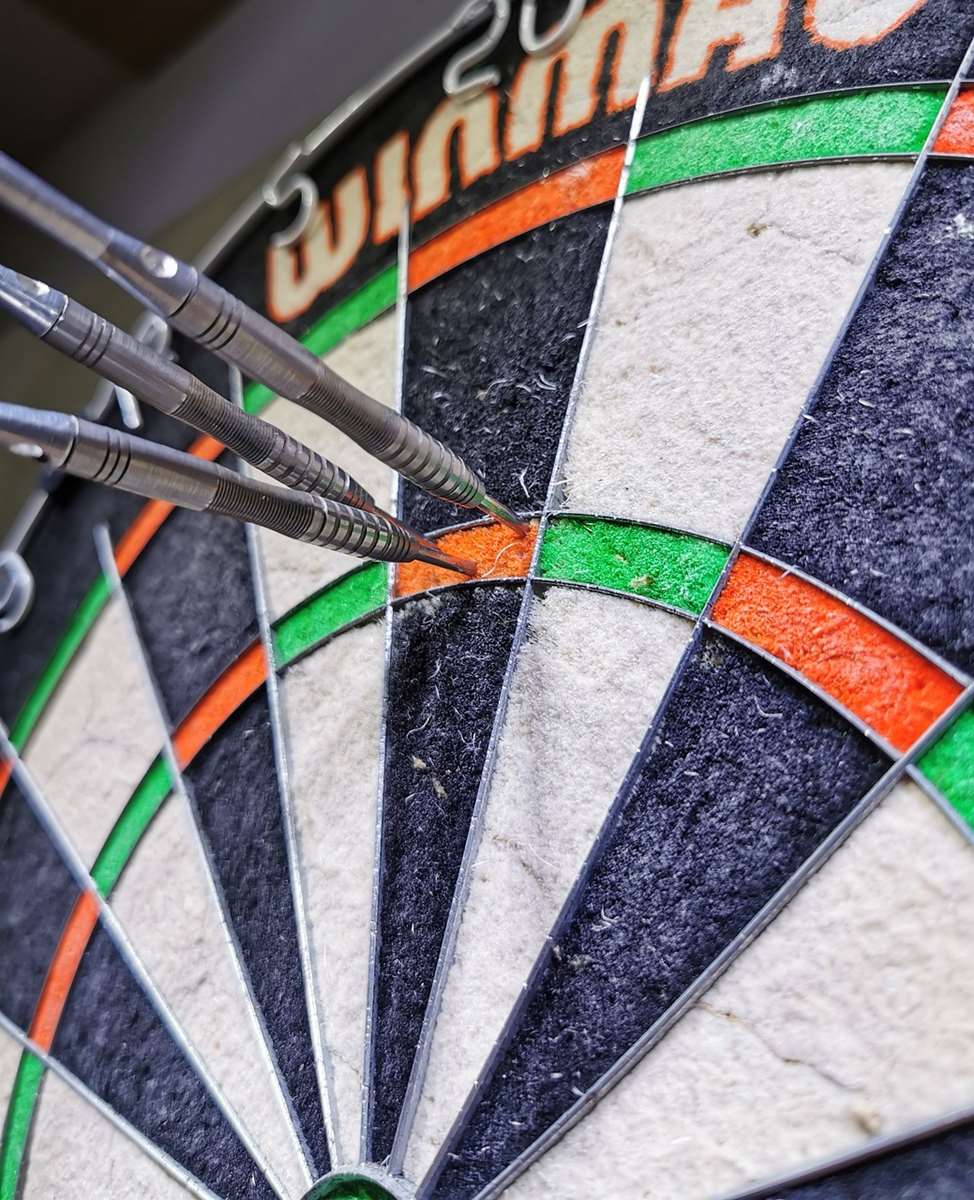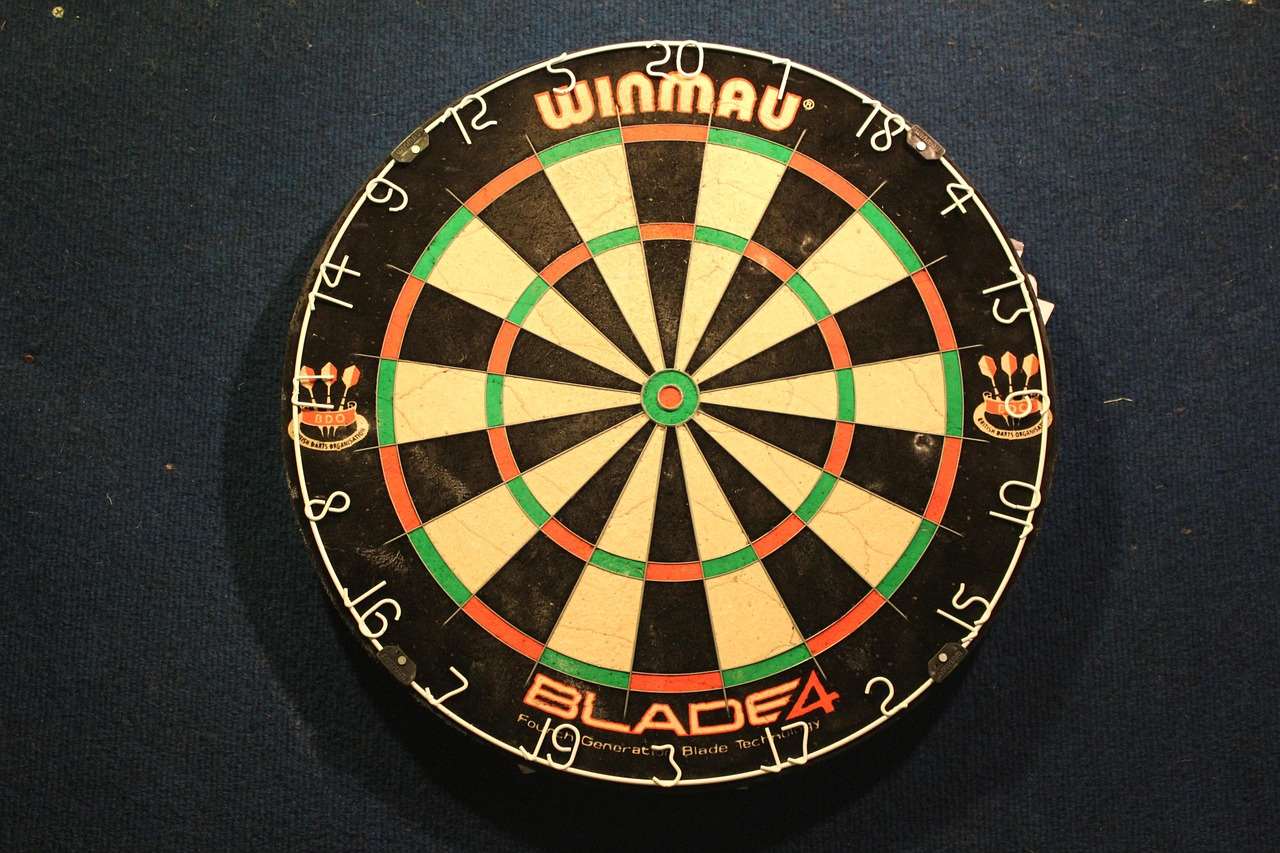Mastering the darts triple tops is crucial for closing out legs quickly and efficiently; hitting that T20 is often the quickest route to victory. This article will guide you through the strategies, techniques, and practice drills you need to consistently land your darts in the coveted triple 20.
⚠️ Still Using Pen & Paper (or a Chalkboard)?! ⚠️
Step into the future! The Dart Counter App handles all the scoring, suggests checkouts, and tracks your stats automatically. It's easier than you think!
Try the Smart Dart Counter App FREE!Ready for an upgrade? Click above!
Understanding the Importance of Darts Triple Tops
In the world of darts, consistently hitting the triple 20 (T20) – also known as the darts triple tops – is a hallmark of a skilled player. It’s the highest-scoring segment on the dartboard and a key component of many strategies, especially when trying to set up a quick checkout. Whether you’re playing 501, cricket, or another variation, the ability to reliably find the triple 20 can significantly improve your game. The T20 allows for a quick path to finishing, significantly reducing the number of darts required to checkout. Mastering this segment is therefore paramount for competitive play.

Beyond the score itself, aiming for the triple 20 also dictates strategy. Players will often plan their throws around setting up a shot at the T20, sometimes even sacrificing a few points on an earlier throw to create a more favorable angle or position. Think of it as a strategic anchor, influencing your entire approach to the game. Recognizing when to go for the triple 20 and when to adjust based on your previous dart is a critical skill.
Techniques for Improving Your Triple 20 Accuracy
Several factors contribute to consistently hitting the triple 20. These range from the physical aspects of your throw to the mental approach you take to the game.
Stance and Posture
A stable and balanced stance is the foundation of any good dart throw. Experiment to find what works best for you, but generally, you’ll want to:
- Place one foot slightly forward, pointing towards the dartboard.
- Distribute your weight evenly between both feet.
- Maintain a relaxed but upright posture.
- Avoid swaying or leaning excessively during your throw.
Consistency is key, and your stance should be replicable every time you step up to the oche.
Grip and Release
Your grip is the connection between you and the dart. A comfortable and consistent grip is crucial. Consider these points:
- Experiment with different grip styles (e.g., two-finger, three-finger) to find what feels most natural.
- Avoid gripping the dart too tightly, as this can cause tension and affect your release.
- Focus on a smooth and controlled release, letting the dart flow naturally from your hand.
Arm Action and Follow-Through
The arm action is the engine of your throw. Focus on a smooth and controlled movement:
- Keep your elbow relatively still during the throw.
- Use your forearm and wrist to generate power.
- Follow through completely after releasing the dart, pointing your fingers towards the target.
- A proper follow-through ensures that you are delivering the dart with the correct trajectory and prevents erratic throws.
Practice this repeatedly, paying close attention to your muscle memory.

Practice Drills for Darts Triple Tops
No amount of theoretical knowledge can replace dedicated practice. Here are some drills specifically designed to improve your darts triple tops accuracy:
The 20/1 Drill
This is a simple but effective drill for focusing solely on the triple 20. The rules are straightforward:
- Throw all three darts at the triple 20.
- Record your score for each round.
- Track your progress over time to see how your accuracy improves.
Focus on your technique with each throw and visualize the dart hitting the target before you release it.
The Around the Clock (T20 Variation)
This drill challenges you to hit the triple 20 and then move systematically around the board, hitting the corresponding number in the triple ring. It is more challenging than simply aiming for the triple 20 each time.
- Start by hitting the triple 20.
- Then, move to the triple 1, triple 2, triple 3, and so on, until you reach the triple 19.
- The goal is to complete the entire circuit in as few darts as possible.
- This drill helps you improve your accuracy on other triple segments, which can be useful for setting up checkouts.
The “Checkout Practice” Drill
This drill simulates game scenarios where you need to hit the triple 20 to set up a checkout. Start with a specific score (e.g., 161, 100) and try to checkout using the optimal strategy. A useful resource is a dart checkout liste pdf, which can help you quickly calculate the best way to finish from any remaining score.
- Choose a checkout number between 41 and 170.
- Determine the optimal checkout route.
- Practice hitting the required triple 20 to set up the finish.
- This drill helps you develop your strategic thinking and accuracy under pressure.
Remember to vary the starting score to practice different checkout combinations.
Mental Game and Focus for Hitting Triple Tops
Darts is as much a mental game as it is a physical one. Maintaining focus and managing pressure are crucial for consistently hitting your targets, including the darts triple tops.
Visualization Techniques
Before each throw, take a moment to visualize the dart hitting the triple 20. Imagine the trajectory, the feeling of release, and the satisfaction of hitting your target. Visualization can help you build confidence and improve your focus.
Dealing with Pressure
Pressure can be a major factor in darts, especially in competitive situations. Learn to manage your emotions and stay calm under pressure. Some techniques include:
- Deep breathing exercises to calm your nerves.
- Positive self-talk to boost your confidence.
- Focusing on the process rather than the outcome.
Maintaining Concentration
Distractions can easily derail your focus. Learn to block out distractions and stay present in the moment. Some tips include:
- Finding a quiet space to practice.
- Using noise-canceling headphones if necessary.
- Focusing on your breathing and your target.
Ultimately, maintaining a clear and focused mind is essential for consistent performance.
Equipment and Setup for Optimal Darts Triple Tops Performance
Having the right equipment and setting up your dartboard correctly can significantly impact your performance. While the player’s skill remains paramount, optimal equipment helps to remove variables that may impact consistency and reduce frustration.
Dartboard Setup
Ensure your dartboard is hung at the correct height (5 feet 8 inches to the bullseye) and distance (7 feet 9.25 inches from the oche). A wobbly or improperly positioned board will affect your accuracy. If you are just beginning to learn, consult resources for setting up a dartboard on wall correctly.
Choosing the Right Darts
Experiment with different dart weights, shapes, and materials to find what feels most comfortable and suits your throwing style. Factors to consider include:
- Weight: Heavier darts tend to be more stable in the air, while lighter darts can be easier to control.
- Shape: Different barrel shapes (e.g., torpedo, straight) affect the dart’s balance and grip.
- Material: Tungsten darts are denser and allow for slimmer barrels, which can help with grouping.
Lighting and Environment
Proper lighting is essential for clear visibility of the dartboard. Make sure the board is well-lit and free from shadows. Also, consider the surrounding environment. A quiet and comfortable space will help you focus and perform at your best.

Advanced Strategies for Maximizing Your Triple 20 Game
Once you have a solid foundation, you can start exploring more advanced strategies to further enhance your darts triple tops game. These techniques involve a higher level of calculation, precision, and adaptability.
Grouping and Shot Placement
Grouping refers to the ability to throw multiple darts close together. Tight groupings around the triple 20 increase your chances of hitting it consistently. Practice drills to improve your grouping by aiming for a specific spot within the T20 segment.
Shot placement involves strategically aiming for different parts of the dartboard to set up your next throw. For example, you might aim slightly to the left of the T20 to open up a better angle for your next dart. Consider where your darts tend to land. For example, if you consistently miss slightly to the right, adjust your stance or aim point accordingly. The best players can identify and correct for these small errors in real-time.
Calculating Checkouts and Planning Ahead
Knowing your checkout routes is crucial for maximizing your scoring potential. Learn common checkout combinations and practice calculating the optimal route from different starting scores. Tools like the Digital dart score app can be invaluable in this regard. This includes knowing the mathematics to adjust when a dart lands where you didn’t expect it to.
Adapting to Different Opponents and Game Situations
Be prepared to adjust your strategy based on your opponent’s skill level and the current game situation. If your opponent is a strong scorer, you might need to take more risks to keep up. If you’re ahead, you might play more conservatively to protect your lead. Adaptability is a key trait of successful darts players.
Common Mistakes to Avoid When Aiming for Darts Triple Tops
Even experienced players can fall into common pitfalls when aiming for the darts triple tops. Being aware of these mistakes can help you avoid them and improve your consistency.
Overthinking Your Throw
Analyzing your throw too much can lead to paralysis by analysis. Trust your muscle memory and avoid overthinking your technique. Simply focus on your target and let your throw flow naturally.
Gripping the Dart Too Tightly
A death grip can cause tension and affect your release. Maintain a relaxed grip and let the dart fly smoothly from your hand. Experiment to find a grip that provides control without excessive force.
Not Following Through
A proper follow-through is essential for accurate throws. Ensure you extend your arm fully towards the target after releasing the dart. A complete follow-through helps maintain the correct trajectory and prevents erratic throws. Make sure to point your fingers towards your desired target after the release.

Conclusion: Mastering Darts Triple Tops for Competitive Success
Achieving mastery of the darts triple tops is a journey that requires dedication, practice, and a strategic mindset. By focusing on your stance, grip, arm action, mental game, and equipment, you can significantly improve your accuracy and consistency. Remember to practice regularly, analyze your performance, and adapt your strategy as needed. Whether you are aiming for the darts masters trophy, or merely trying to beat your friends, knowing where to aim and how to get there makes all the difference.
Start implementing the techniques and drills outlined in this article today, and you’ll be well on your way to becoming a more confident and successful darts player. Now, grab your darts and get practicing! Good luck hitting those triple 20s!
Hi, I’m Dieter, and I created Dartcounter (Dartcounterapp.com). My motivation wasn’t being a darts expert – quite the opposite! When I first started playing, I loved the game but found keeping accurate scores and tracking stats difficult and distracting.
I figured I couldn’t be the only one struggling with this. So, I decided to build a solution: an easy-to-use application that everyone, no matter their experience level, could use to manage scoring effortlessly.
My goal for Dartcounter was simple: let the app handle the numbers – the scoring, the averages, the stats, even checkout suggestions – so players could focus purely on their throw and enjoying the game. It began as a way to solve my own beginner’s problem, and I’m thrilled it has grown into a helpful tool for the wider darts community.